This is one of a long-term series of posts about Ariadne’s Tribe style inclusive Minoan spirituality. All my posts about Tribe spiritual practice can be found here. Please feel free to ask questions and request subjects for future posts.
If it looks like a cow but it has horns, it must be a bull, right?
Wrong.
It’s a myth that every horned bovine creature depicted in ancient art must necessarily be a bull.
Did you know that, before the advent of modern industrial animal husbandry, all cattle (both cows and bulls) had horns? It was only when cattle began to be crammed into tight feedlot spaces that they were polled (had their horns removed) or bred not to have horns in the first place, to keep them from injuring each other.
So if you see a horned bovine critter in Minoan art, it might be a bull. But it might also be a cow. That image up top is a faience plaque found at Knossos, depicting a spotted cow suckling her lovely calf. Check out her awesome horns.
The Minoan pantheon includes both male and female bovine horned deities: the Minotaur and Europa. It pays to look more closely. (And yes, there are horned cow goddesses in other pantheons as well: Hathor is a well-known example.)
It's unfortunate that the Victorian and Edwardian-era archaeologists who labeled a lot of the Minoan artifacts assumed that any depiction of cattle with horns must be bulls; they only relented and labeled the art as cows when the horned animals had suckling calves pulling at their udders.
Of course, the archaeologists weren't farmers or ranchers, so they probably didn't know any better. Unfortunately, the "bull" labels (double entendre intended) have stuck. So we have to look more closely to make sure we're identifying the images in the art correctly.
There are some obvious ways to tell the difference. I mean, look between their legs. <cough> The famous Bull Leaper fresco from Knossos shows the bull's genitalia:
as does this bronze figurine:
But what if it's not clear from "between the legs" whether the animal you're looking at is a cow or a bull? Among bovines, the two sexes have noticeably different body forms (phenotypes). Bulls have really heavy necks and forequarters compared to cows, and their overall body shape and proportions are different, as you can see in the fresco and bronze figurine above. Here's a vintage graphic that shows the differences side by side (or, I guess, one above the other):
Let's look at how these differences play out in the art. Here, for instance, is a delightful Minoan ceramic figurine that could just as easily be a cow as a bull:
This one, from Pseira, though, is clearly a bull. The musculature is distinct (as is the genitalia):
You can even tell the difference just from the head. Bovine head rhytons (libation pitchers) are a common Minoan artifact. Many of us who practice Tribe spirituality use our own modern versions for libations (cow-shaped cream pitchers, anyone?).
So let's look at a couple of Minoan bovine head rhytons. Here's one from Zakros that's clearly a bull:
You can see the heavy neck muscle and folds of skin here, a signal of all the testosterone that's flowing through his system. (I also love the curly hair on his head. I grew up on a farm, I love cattle, and I just want to scritch this guy right between the horns.)
Now compare the rhyton above to this one from Gournia:
This one is clearly a cow. The muzzle is shaped differently and the neck/shoulder musculature is far slimmer. And she has lovely horns.
So yes, I know the tendency is to automatically assume that horns = bull.
Instead, look more closely and see if you can tell which it is. Because Europa deserves as much love as the Minotaur, don't you think?
I’m not planning to paywall my Substack, but if my work has meaning and value for you, please consider dropping a little something in my tip jar at Ko-Fi. Thank you!
You can find my books here and my art here and here. I do apologize, but due to unpleasant activity from trolls, I’ve had to limit comments to subscribers only. I hope you understand.
About Laura Perry
I'm the founder and Temple Mom of Ariadne's Tribe, a worldwide inclusive Minoan spiritual tradition. I'm also an author, artist, and creator who works magic with words, paint, ink, music, textiles, and herbs. My spiritual practice includes spirit work and herbalism through the lens of lifelong animism. I write Pagan / polytheist / magical non-fiction and fiction across several different subjects and genres. My Minoan entry in the Moon Books Pantheons series is now available for pre-order and will be released on 26 August 2025. My book of modern Minoan myths is now available in paperback, hardcover, and ebook. I’m also an avid herb and vegetable gardener and living history demonstrator.






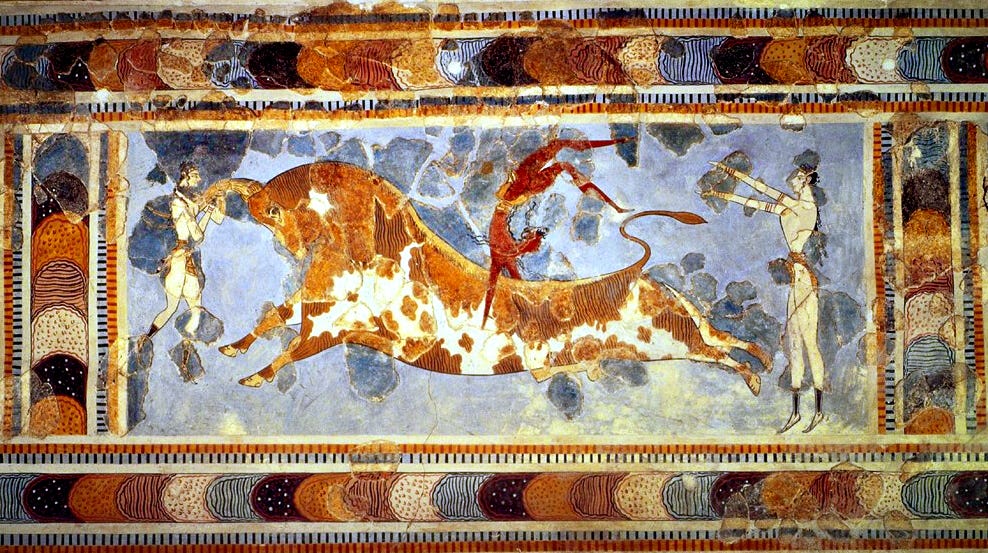
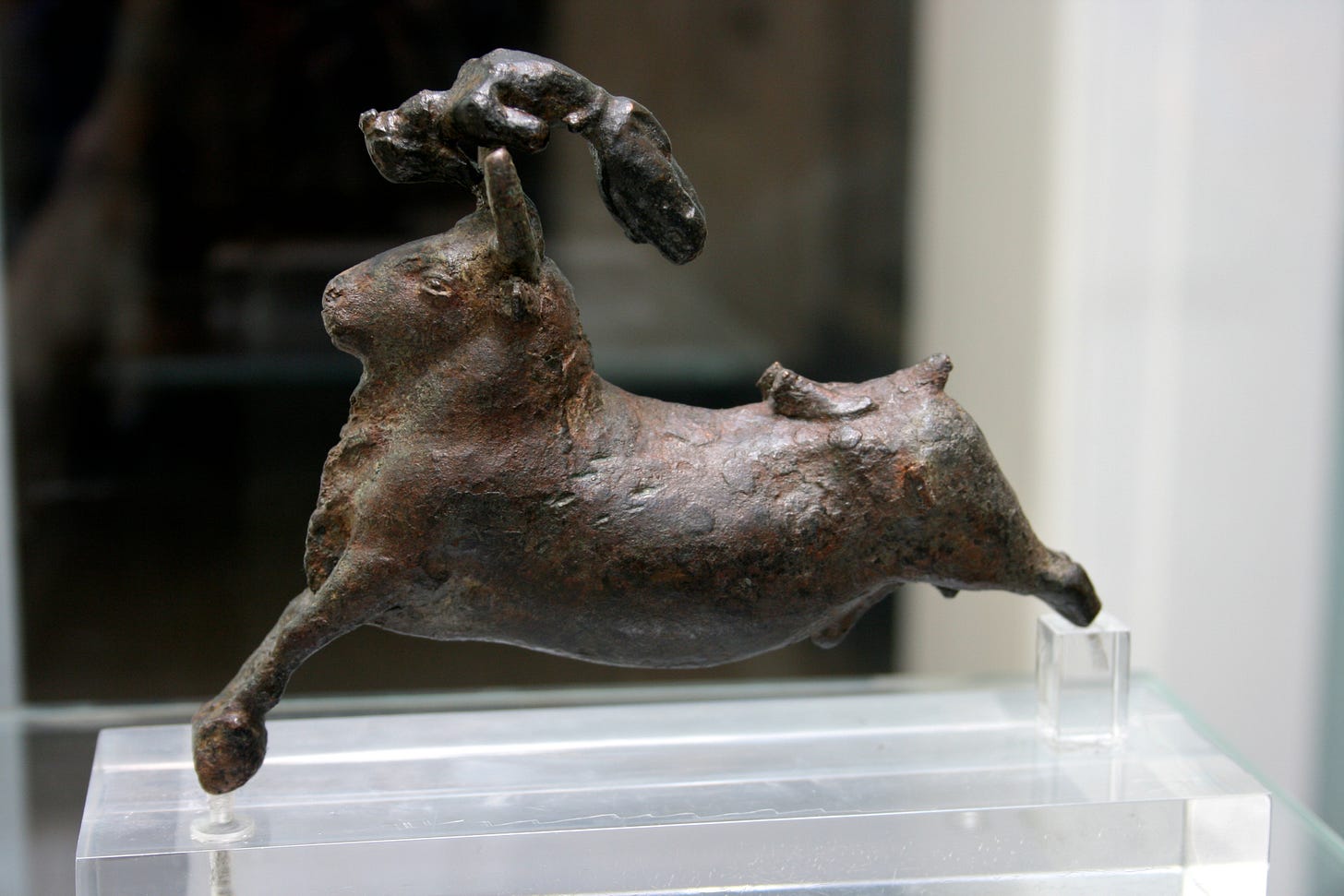

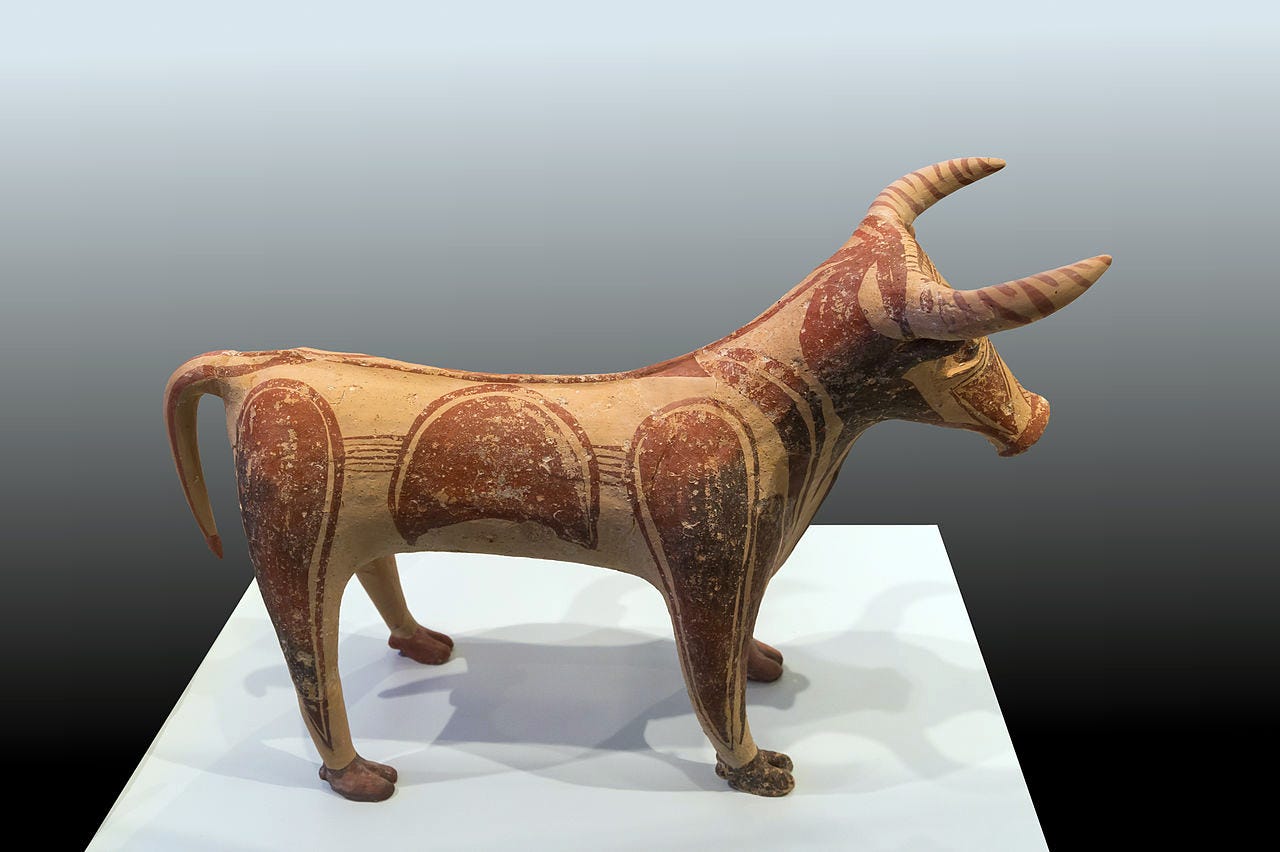
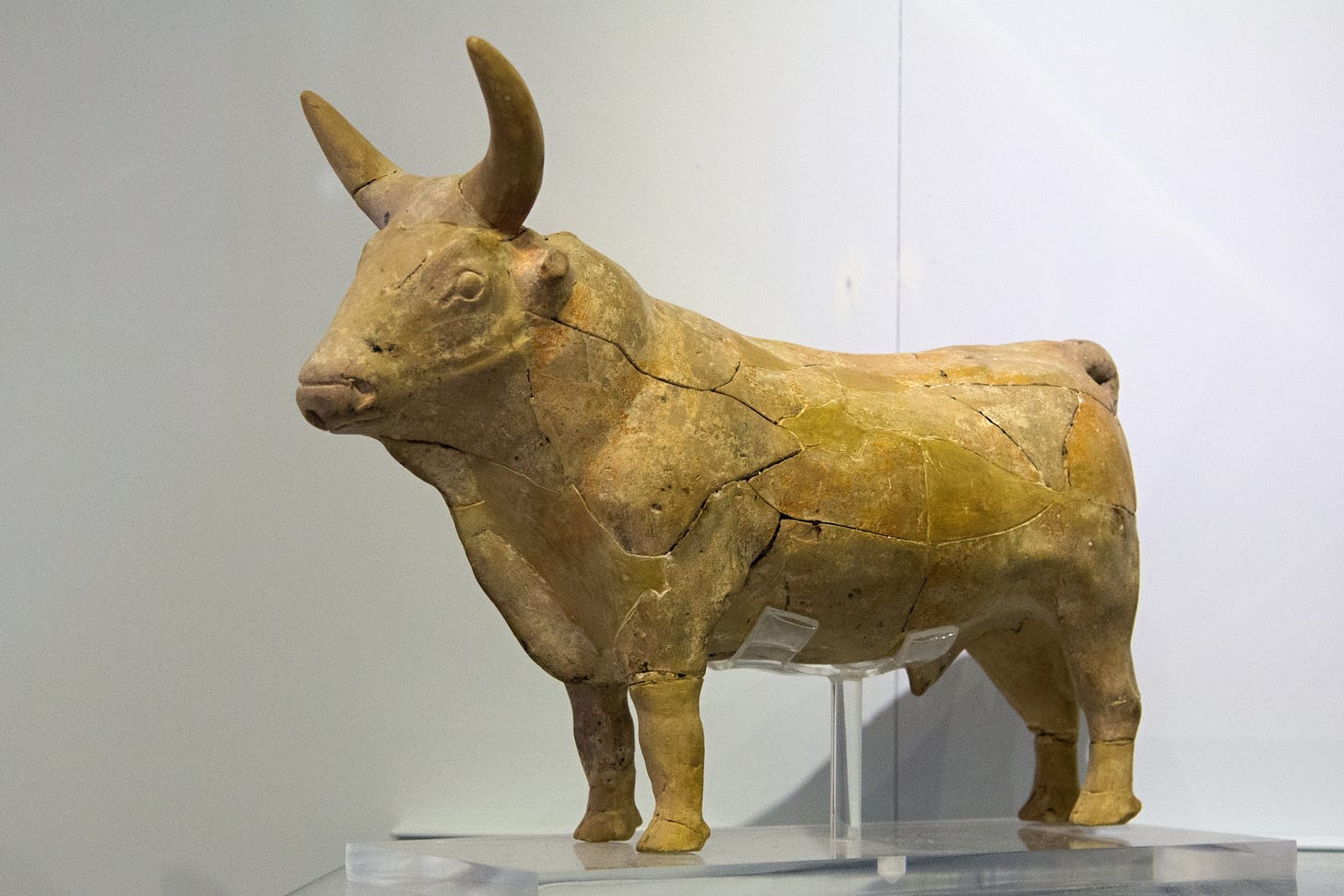
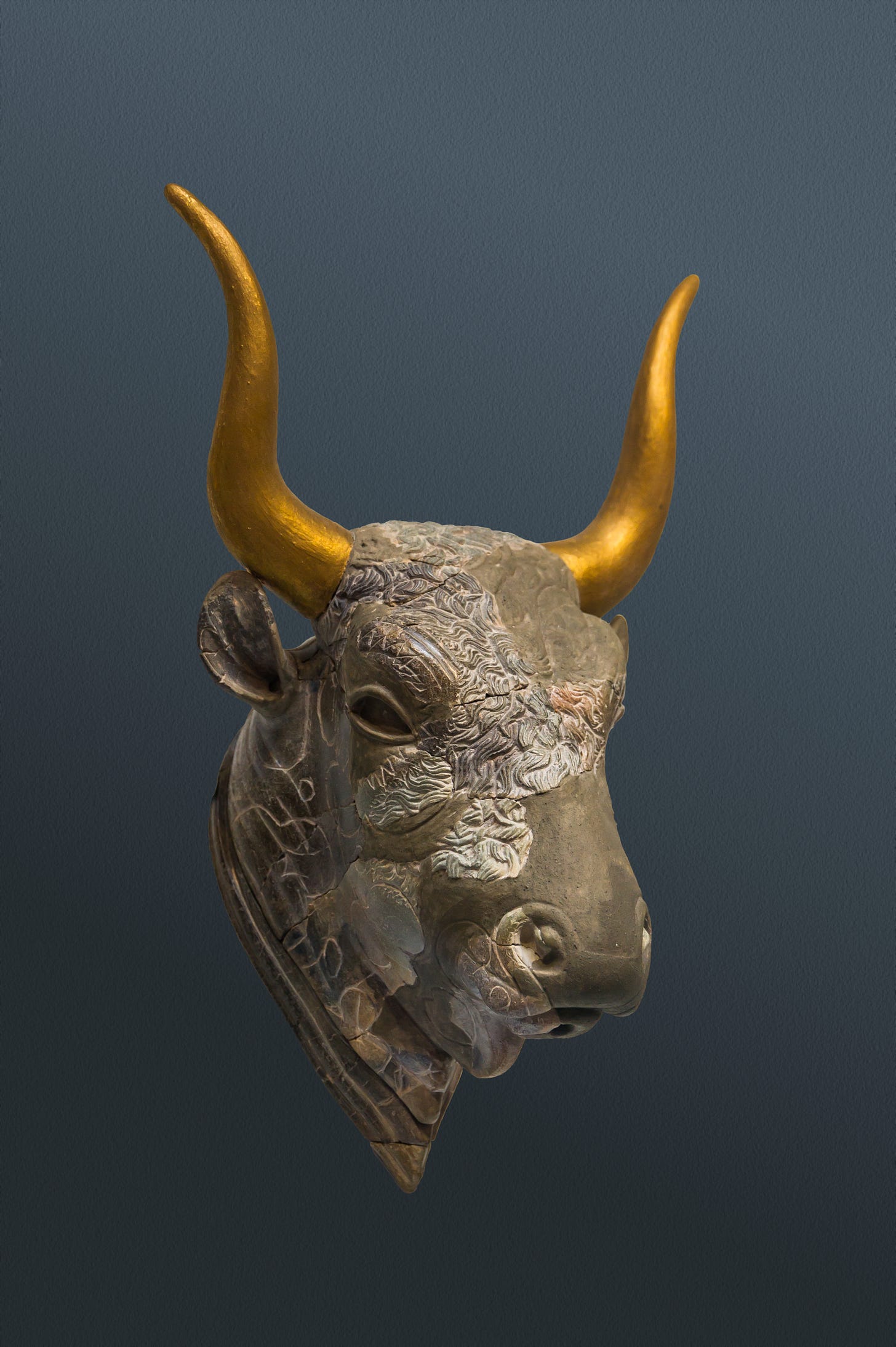
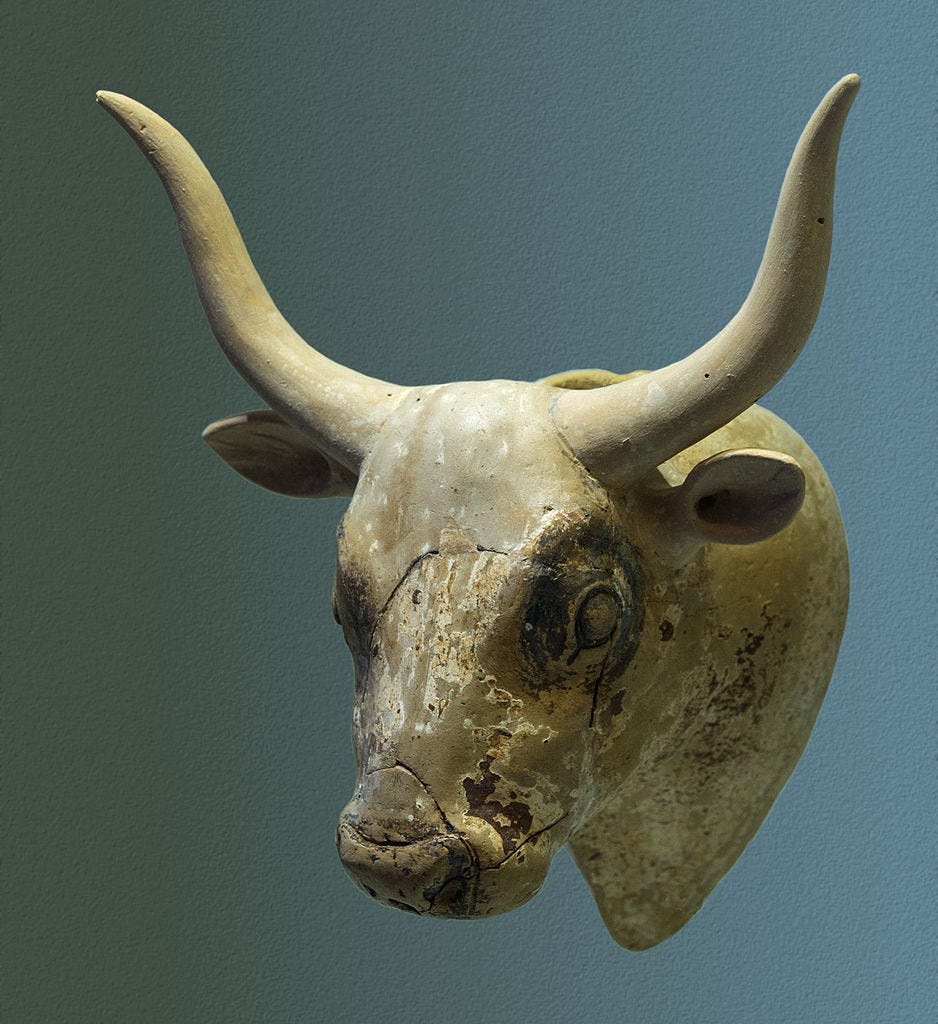
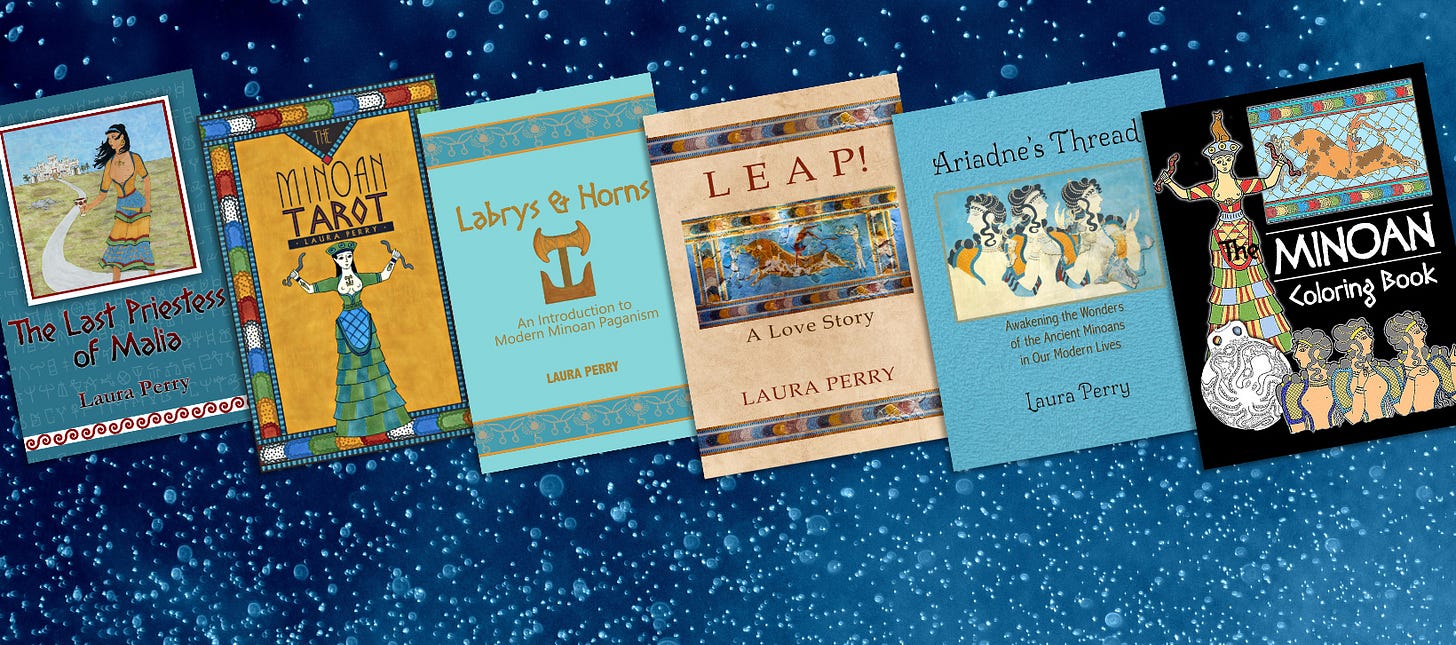
I guess I'm a nerd but I LOVED this! Just finished asking Roy (whose uncle had a dairy) if he knew cows used to have horns and he said OF COURSE! Which brings me to your comment about Hathor and by association Isis. So are you saying the "horns" around the solar disc we often see atop her head are bovine horns? And I've heard that's a solar and lunar disc. I'll bet you can clarify for me?
My immediate response was Rune Ur or Uruz. Looks like horns (but upside down). I perceive it as a container teeming with deeply (and sacred) feminine power.